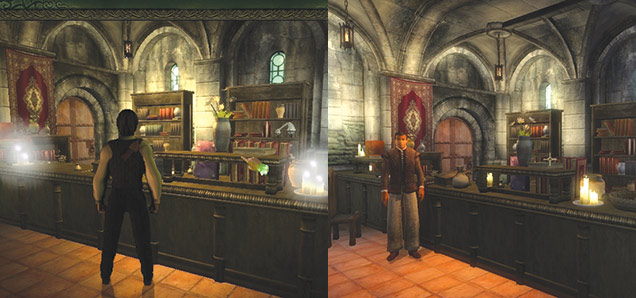Gaming The System: Ripped of: When games plagiarize (part one)
 CREDIT: MAJESTIC STUDIOS
CREDIT: MAJESTIC STUDIOSIt takes a special kind of idiocy to steal the graphics of a game that sold 3.5 million copies, but then again, Limbo's developers were truly something else...
Inspiration is a concept that humanity has practically built itself on entirely. It’s just how close to the original as something can get before people are willing to call it out for blatant theft.
And of course, in a medium that rewards its creator’s creativity – at least it used to once, hyuk hyuk – you’ll have your inevitable uncreative near-do-wells wanting that slice of the pie by any means necessary.
Plagiarism in video games has existed for as long as the medium has been open to a public with cashfilled pockets.
Pong (1970s)
Ralph Baer, inventor of the world’s first home game console, the Magnavox Odyssey, probably wouldn’t appreciate you calling one the seminal arcade game Atari’s Pong. In what has to be the very first video-game-related lawsuit, Magnavox sued Atari, alleging that Pong creator Allan Alcorn had plagiarized the concept of an electronic ping-pong ball game. However, this suit would prove quite the blessing to Atari, when Magnavox settled by paying the fledgling company a licensed Pong creator. With this newfound cash flow, Atari trooped on ahead with the Atari 2600, leaving Magnavox in the dust, mostly forgotten.
The Great Giana Sisters (1987, C64)
Relatively unknown aside from those who played the new Giana Sisters: Twisted Dreams indie title, the Giana Sisters game has quite a history behind what’s ultimately a simple but very well made and entertaining Super Mario clone. Europe’s gaming scene during the 1980’s was dominated by home computers, with the Commodore 64 sitting on some of the largest market share. Naturally, the popularity of Mario in Japan and across the pond, combined with the Big N’s refusal to release games on hardware not made by the company, got many asking, “Where’s ours?” Thus, the Giana Sisters were born to quench the thirst many C64 owners had for a smooth-scrolling platform game. Despite Nintendo pushing in some legal muscle against the tiny German developer, Time Warp Productions, the game won broad acclaim as being one of the best games of its platform.
Limbo of the Lost
Good games borrow, great games steal… and then there’s Limbo of the Lost, which was neither good or great but stole with true conviction. An adventure game based on the mysterious real-life disappearance of the crew of a ship called Mary Celeste in 1872. It was soon picked up by various gaming sites as being structured almost entirely out of plagiarized material. The game utilized pre-rendered backgrounds in the vein of older titles like Resident Evil, however, in Limbo’s case, instead of creating new environments in whatever mapmaking tool, the developers opted to use screenshots from various well-loved titles like Oblivion, Wolfenstein and Painkiller as backgrounds, like no one would notice. The hilarious fallout that ensued resulted in the game being pulled from shelves, destroying the reputation of the developers, and forever serving as fodder for YouTube gamers due to its absolutely bonkers storyline.













